
Fancy Medieval Swords
Fancy Medieval Swords: The Elite Weaponry of the Middle Ages
The Middle Ages were characterized by a fascination with warfare and the art of swordsmanship. Swords were the primary weapon of choice, and they were used by knights, nobles, and the elite of the time. The use of swords in medieval warfare was a strategic and tactical advantage that was not available to the common foot soldiers. Swords were expensive and required significant skill and training to wield effectively. The fancy medieval sword was one of the most sought-after and prized items of the time.
Overview of Medieval Swords
Medieval swords were designed to be lightweight, agile, and precise. There were three main types of swords: thrusting swords, cutting swords, and hybrid swords. Thrusting swords were designed to pierce through armor and were typically longer and narrower than cutting swords. Cutting swords, on the other hand, were designed for hacking and slashing through armored and unarmored opponents. Hybrid swords combined the features of both thrusting and cutting swords and were a popular choice among knights and nobles.
Swords were also extensively decorated with elaborate designs and symbols. The handles and hilts of swords were often made of precious metals and mounted with gems and jewels. The blades were etched with detailed engravings and designs that often depicted scenes from battles or religious imagery. The decoration of swords was a display of wealth and status, and it was not uncommon for swords to become a family heirloom passed down through generations.
One of the most famous fancy medieval swords is the sword of Charlemagne. The sword was said to have been created in the early 9th century and was characterized by its gold and silver hilt and pommel. The blade of the sword was made of iron and was engraved with the Latin inscription "Joyeuse," which translates to "joyful" or "happy."
Another famous medieval sword is the Sword of Saint Maurice, which is said to have been used by the Swiss hero, Saint Maurice. The hilt of the sword is made of silver and is inlaid with gold and garnets. The blade of the sword is etched with intricate designs that include the image of Saint Maurice.
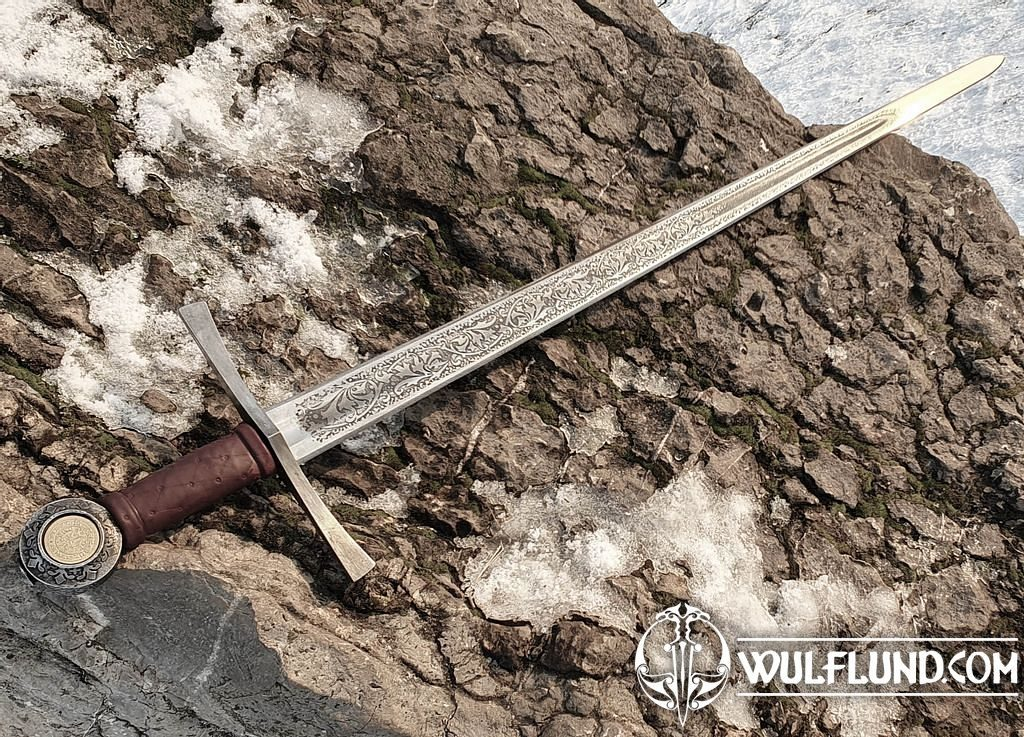
Famous Swordsmiths of the Middle Ages
Sword making was a highly skilled profession, and there were swordsmiths all over Europe. The most famous swordsmiths of the Middle Ages were found in Toledo, Spain. Toledo was known for its high-quality steel, which was used to make some of the most famous swords of the time. Some of the most famous swordsmiths of the Middle Ages include:
-
Ulfberht: The name of Ulfberht is synonymous with high-quality swords. The swords made by Ulfberht were known for their superior strength and sharpness. The swords were made of high-quality steel and had a distinctive inscription on the blade that read "Ulfberht."
-
Peter von Danzig: Peter von Danzig was a German swordsmith who lived during the late 15th century. He was famous for his intricate designs and elaborate decoration of swords.
-
Guido de Colonna: Guido de Colonna was an Italian swordsmith who lived during the 14th century. He was known for his innovative designs and his use of high-quality steel.
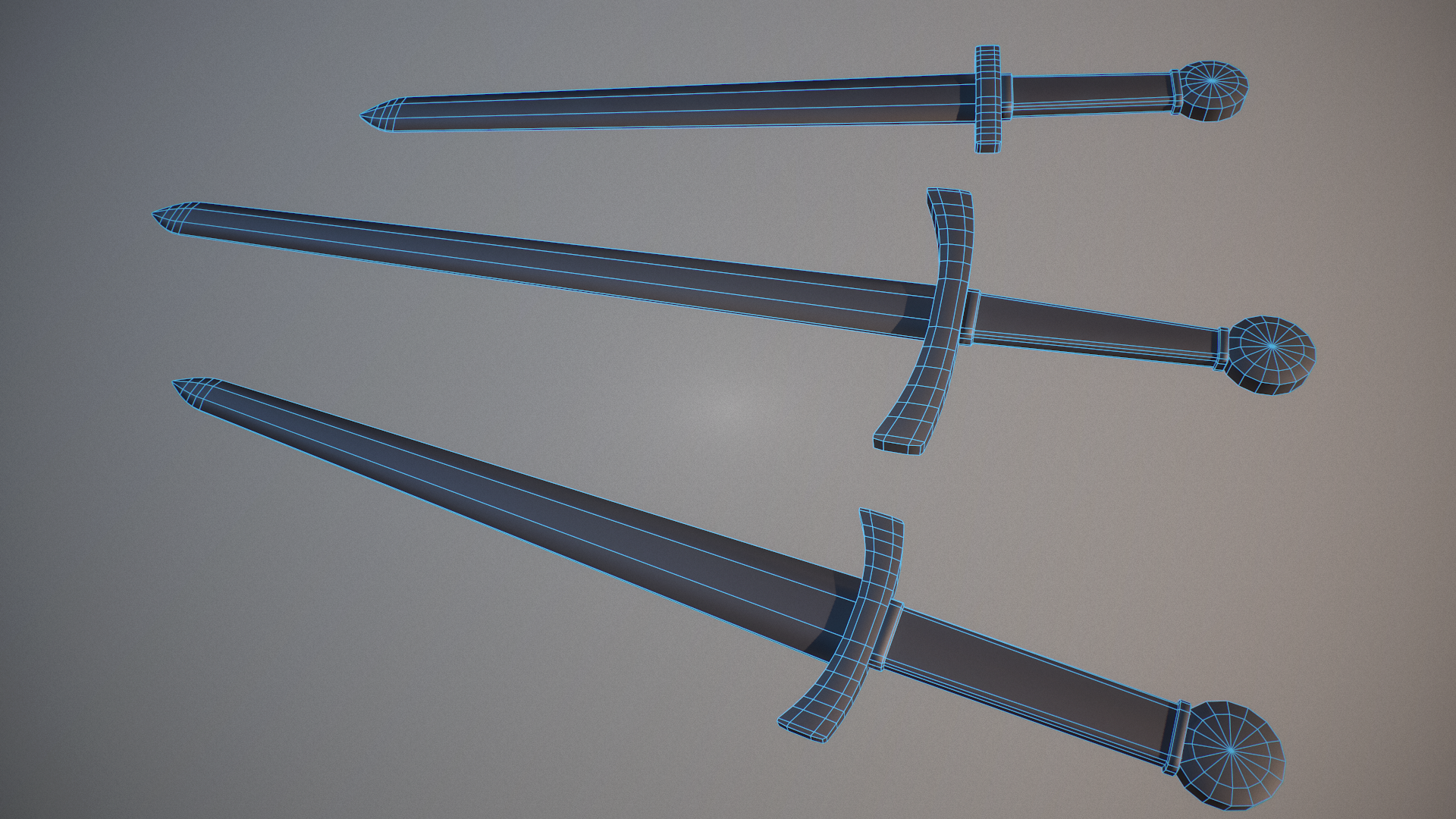
Famous Swords of the Middle Ages
There were many famous swords of the Middle Ages, and some of them have become legendary. These swords were often associated with legendary figures, and their stories have been passed down through generations. Here are some of the most famous swords of the Middle Ages:
-
Excalibur: Excalibur is one of the most famous swords of the Middle Ages. It is associated with King Arthur and is said to have been the sword that he pulled from the stone to become king. The sword was said to have magical powers and was often depicted as a symbol of heroism and chivalry.
-
Durendal: Durendal is the sword of the legendary French hero, Roland. The sword was said to have been able to cut through anything and was considered an invincible weapon. It is often depicted as a symbol of honor and valor.
-
Balmung: Balmung is the sword of Siegfried, a legendary German hero. The sword was said to have been enchanted and was able to provide its wielder with protection from harm. It is often depicted as a symbol of strength and courage.
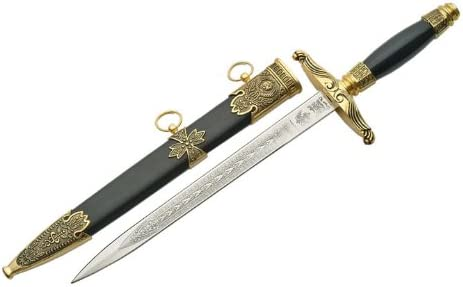
The Role of Swords in Medieval Warfare
Swords played a crucial role in medieval warfare. They were the weapon of choice for knights and nobles, and they were used in both offensive and defensive strategies. Swords were also used as a status symbol and were considered an important element of chivalry and honor.
One of the most important roles that swords played in medieval warfare was in close combat. Swords were an effective weapon in hand-to-hand combat, and they were used to deliver decisive blows to opponents. Knights would often charge into battle with swords drawn, placing them at the front line of the attack.
Swords were also important in defensive strategies. In castle sieges, swords were used to parry and deflect enemy attacks. They were also used by archers and crossbowmen to defend themselves in close combat situations.
In addition to their military uses, swords were also important in ceremonial and social events. For example, swords were often used in dueling ceremonies between knights and nobles. These ceremonies were important in maintaining the honor and prestige of the ruling class.
Conclusion
Fancy medieval swords were some of the most iconic weapon of the Middle Ages. They were designed to be both functional and decorative, and they played an important role in the warfare, culture, and history of the time. The swords were symbols of power, status, and prestige, and they had the ability to inspire awe and admiration. The legacy of these swords lives on today, as they continue to captivate the imaginations of people all over the world.

The History of Medieval Swords
Swords have been around for thousands of years. The earliest swords were made of bronze and were used by ancient civilizations like the Egyptians and the Greeks. The first iron swords were also made during the Greek era, but it wasn't until the Middle Ages that swords really began to take on the form that we recognize today.
One of the most significant developments in the history of swords was the invention of Damascus steel. This type of steel was made through a complex process of forging and folding, which created a blade with a distinctive pattern of wavy lines. Damascus steel swords were highly prized for their superior strength and sharpness, and they were used by the knights and nobles of the Middle Ages.
As technology continued to advance, sword making techniques continued to improve. Swords began to be treated with different types of coatings, like oil or wax, to prevent rusting. Handles and hilts were also decorated with intricate designs, like etchings and carvings, and embellished with precious metals and jewels.
In the late Middle Ages, firearms began to replace swords as the primary weapons of choice on the battlefield. But while swords may have lost some of their military importance, they continued to be used in ceremonials and duels, and they remain an important symbol of the era to this day.
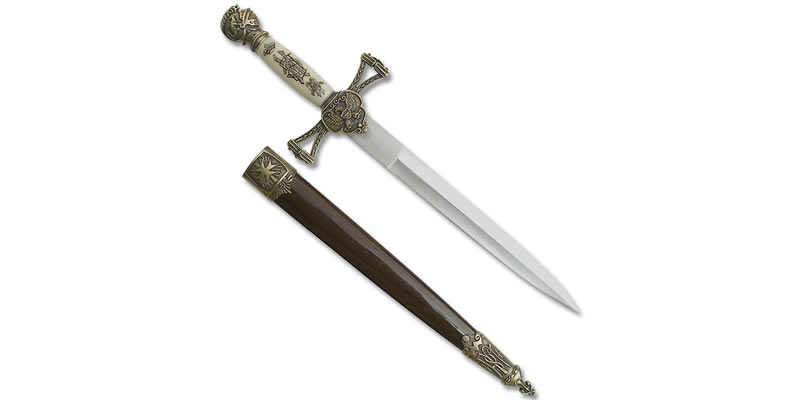
Different Types of Medieval Swords
There were many different types of swords used throughout the Middle Ages, each with its own unique features and purposes. Here are some of the most common types of swords:
-
Longsword: The longsword was one of the most popular swords of the Middle Ages. It was typically around 40 inches long and was designed to be used with two hands. The longsword was a versatile weapon that could be used for both cutting and thrusting.
-
Broadsword: The broadsword was a heavy, single-edged sword that was used primarily for cutting. It was designed to be wielded with one hand and was often used in combination with a shield.
-
Falchion: The falchion was a curved sword that was popular in the late Middle Ages. It was mainly used for cutting, and its curve made it particularly effective for chopping through armor and shields.
-
Rapiers and Small Swords: Rapiers and small swords were lightweight, thrusting swords that were popular in the later part of the Middle Ages. They were often used in dueling and were favored by the nobility.
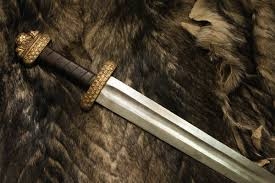
Sword Fighting Techniques
Sword fighting was a complex and highly skilled art. Medieval swordsmanship involved a wide range of techniques, from basic strikes to complex parries and counters. Sword fighting techniques varied depending on the type of sword being used, as well as the style of fighting.
The most common type of sword fighting in the Middle Ages was known as the "cut and thrust" style. This involved both cutting and thrusting movements, and it was designed to take advantage of the strengths of a particular sword.
One of the most important aspects of sword fighting was footwork. The way that a swordsman moved and positioned their body was critical to their success. Swordsmen were trained to move quickly and with precision, while keeping their balance and avoiding getting trapped or cornered.
In addition to footwork, sword fighting also involved a lot of body positioning and dynamic movements. Swordsmen would often use feints and false moves to try and trick their opponents, and they had to be able to quickly adjust and react to changes in the situation.
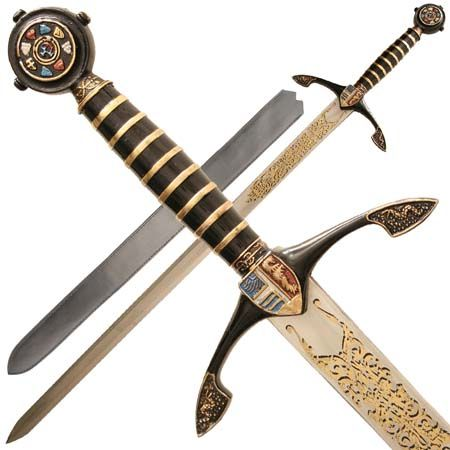
Conclusion
Fancy medieval swords were an important part of the Middle Ages, both as weapons and as symbols of power and prestige. They were the weapons of choice for the knights and nobles of the era and played a crucial role in the warfare and culture of the time. Today, medieval swords remain an enduring symbol of the era and continue to fascinate people with their intricate designs and rich history. Whether you're a history buff or simply appreciate the artistry of these beautiful weapons, medieval swords are a testament to the skill and craftsmanship of generations of swordsmiths and warriors.

